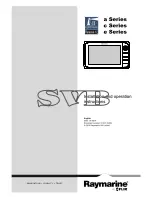
All information, illustrations and technical specifications in these operating instructions are based on the latest information available at the time of
publication. We reserve the right to make design changes at any time without prior notification.
106
10.0. Technical Specifications
10.2. Metric bolt and cap screw torque values
Quality
class and
head
markings
Quality
class and
head
markings
Size
Quality class 4.8
Quality class 8.8 or 9.8
Quality class 10.9
Quality class 12.9
Lubricated *
Dry **
Lubricated *
Dry **
Lubricated *
Dry **
Lubricated *
Dry **
N-m lb-ft N-m lb-ft N-m lb-ft N-m lb-ft N-m lb-ft N-m lb-ft N-m lb-ft N-m lb-ft
M6
4,8
3,5
6
4,5
9
6,5
11
8,5
13
9,5
17
12
15
11,5
19
14,5
M8
12
8,5
15
11
22
16
28
20
32
24
40
30
37
28
47
35
M10
23
17
29
21
43
32
55
40
63
47
80
60
75
55
95
70
M12
40
29
50
37
75
55
95
70
110
80
140
105
130
95
165
120
M14
63
47
80
60
120
88
150
110
175
130
225
165
205
150
260
190
M16
100
73
125
92
190
140
240
175
275
200
350
255
320
240
400
300
M18
135
100
175
125
260
195
330
250
375
275
475
350
440
325
560
410
M20
190
140
240
180
375
275
475
350
530
400
675
500
625
460
800
580
M22
260
190
330
250
510
375
650
475
725
540
925
675
850
625 1075 800
M24
330
250
425
310
650
475
825
600
925
675 1150 850 1075 800 1350 1000
M27
490
360
625
450
950
700 1200 875 1350 1000 1700 1250 1600 1150 2000 1500
M30
675
490
850
625 1300 950 1650 1200 1850 1350 2300 1700 2150 1600 2700 2000
M33
900
675 1150 850 1750 1300 2200 1650 2500 1850 3150 2350 2900 2150 3700 2750
M36
1150 850 1450 1075 2250 1650 2850 2100 3200 2350 4050 3000 3750 2750 4750 3500
The torques specified in the table
are guide values. DO NOT use these
values if a different torque value is
given in these operating instructions
for a specific application. Check
tightness of screws and bolts
regularly.
Shear bolts are designed to fail at
predetermined loads. Always replace a
shear bolt with an identical quality
class
Screws and bolts should be replaced
with the same or a higher quality
class. If higher quality class
bolts or screws are used, these
should only be tightened to the
strength of the screw/bolt they are
replacing.
Make sure that the threads are clean
and that the screws are correctly
connected. This will prevent them
from being damaged during tightening.
Tighten plastic insert or crimped
steel-type locknuts to approximately
50 percent of the dry torque shown in
the table. Tighten toothed or
serrated-type locknuts to the full
torque value.
* “Lubricated“ means coated with a
lubricant such as engine oil, or that
phosphate and oil coated screws are used.
** “Dry“ means plain or zinc plated screws
without any lubrication.


































